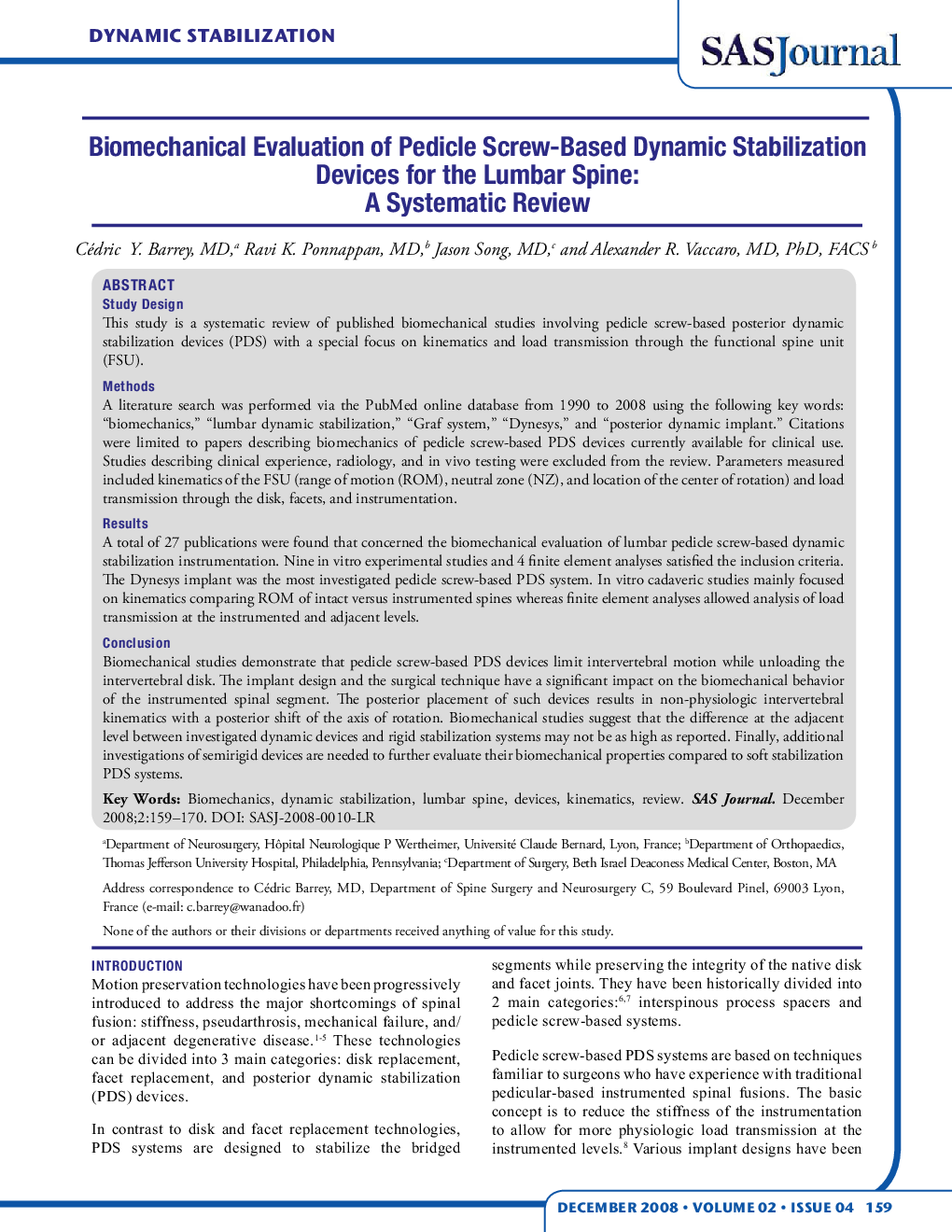| کد مقاله | کد نشریه | سال انتشار | مقاله انگلیسی | نسخه تمام متن |
|---|---|---|---|---|
| 4092467 | 1605024 | 2008 | 12 صفحه PDF | دانلود رایگان |

Study DesignThis study is a systematic review of published biomechanical studies involving pedicle screw-based posterior dynamic stabilization devices (PDS) with a special focus on kinematics and load transmission through the functional spine unit (FSU).MethodsA literature search was performed via the PubMed online database from 1990 to 2008 using the following key words: “biomechanics,” “lumbar dynamic stabilization,” “Graf system,” “Dynesys,” and “posterior dynamic implant.” Citations were limited to papers describing biomechanics of pedicle screw-based PDS devices currently available for clinical use. Studies describing clinical experience, radiology, and in vivo testing were excluded from the review. Parameters measured included kinematics of the FSU (range of motion (ROM), neutral zone (NZ), and location of the center of rotation) and load transmission through the disk, facets, and instrumentation.ResultsA total of 27 publications were found that concerned the biomechanical evaluation of lumbar pedicle screw-based dynamic stabilization instrumentation. Nine in vitro experimental studies and 4 finite element analyses satisfied the inclusion criteria. The Dynesys implant was the most investigated pedicle screw-based PDS system. In vitro cadaveric studies mainly focused on kinematics comparing ROM of intact versus instrumented spines whereas finite element analyses allowed analysis of load transmission at the instrumented and adjacent levels.ConclusionBiomechanical studies demonstrate that pedicle screw-based PDS devices limit intervertebral motion while unloading the intervertebral disk. The implant design and the surgical technique have a significant impact on the biomechanical behavior of the instrumented spinal segment. The posterior placement of such devices results in non-physiologic intervertebral kinematics with a posterior shift of the axis of rotation. Biomechanical studies suggest that the difference at the adjacent level between investigated dynamic devices and rigid stabilization systems may not be as high as reported. Finally, additional investigations of semirigid devices are needed to further evaluate their biomechanical properties compared to soft stabilization PDS systems.
Journal: SAS Journal - Volume 2, Issue 4, December 2008, Pages 159–170